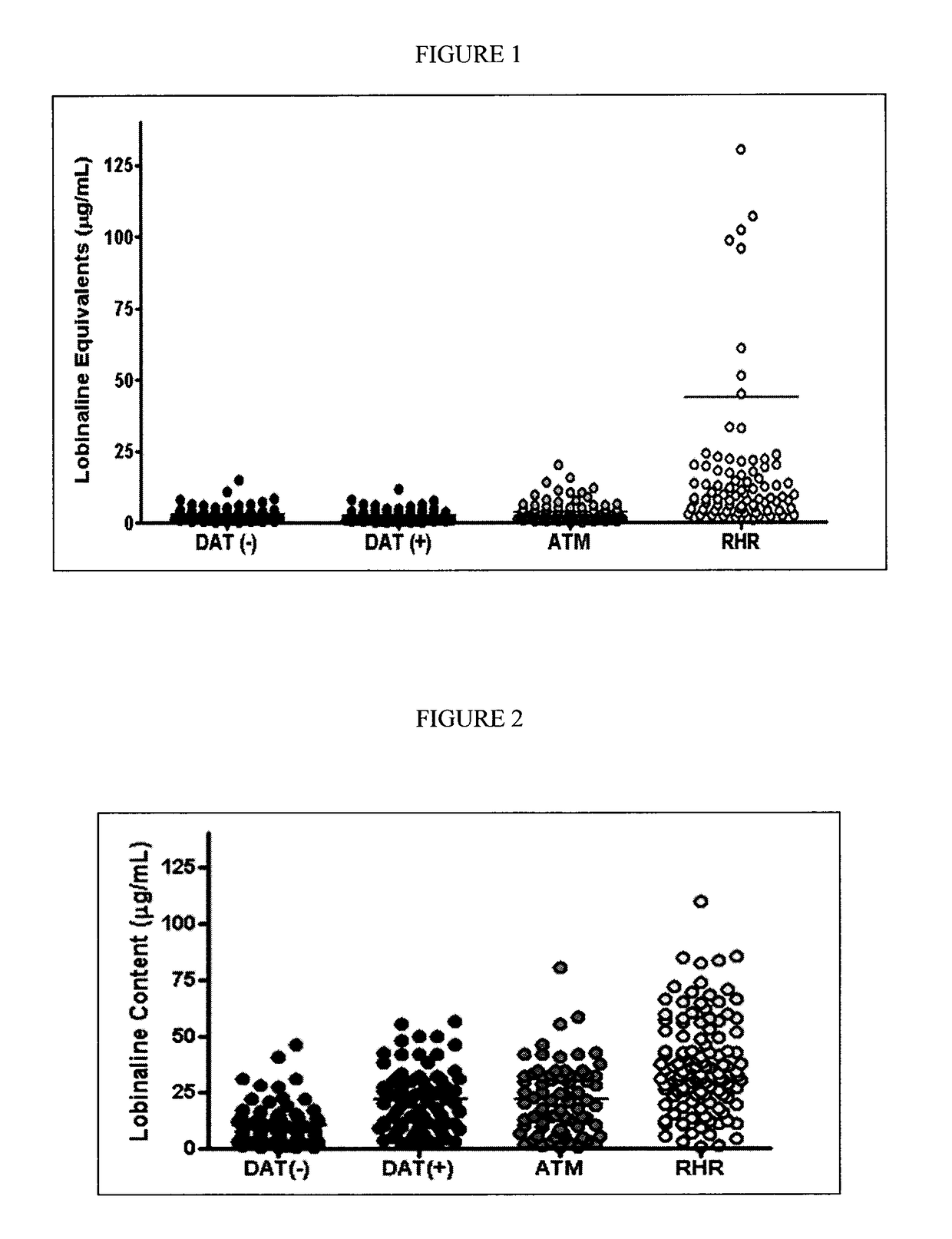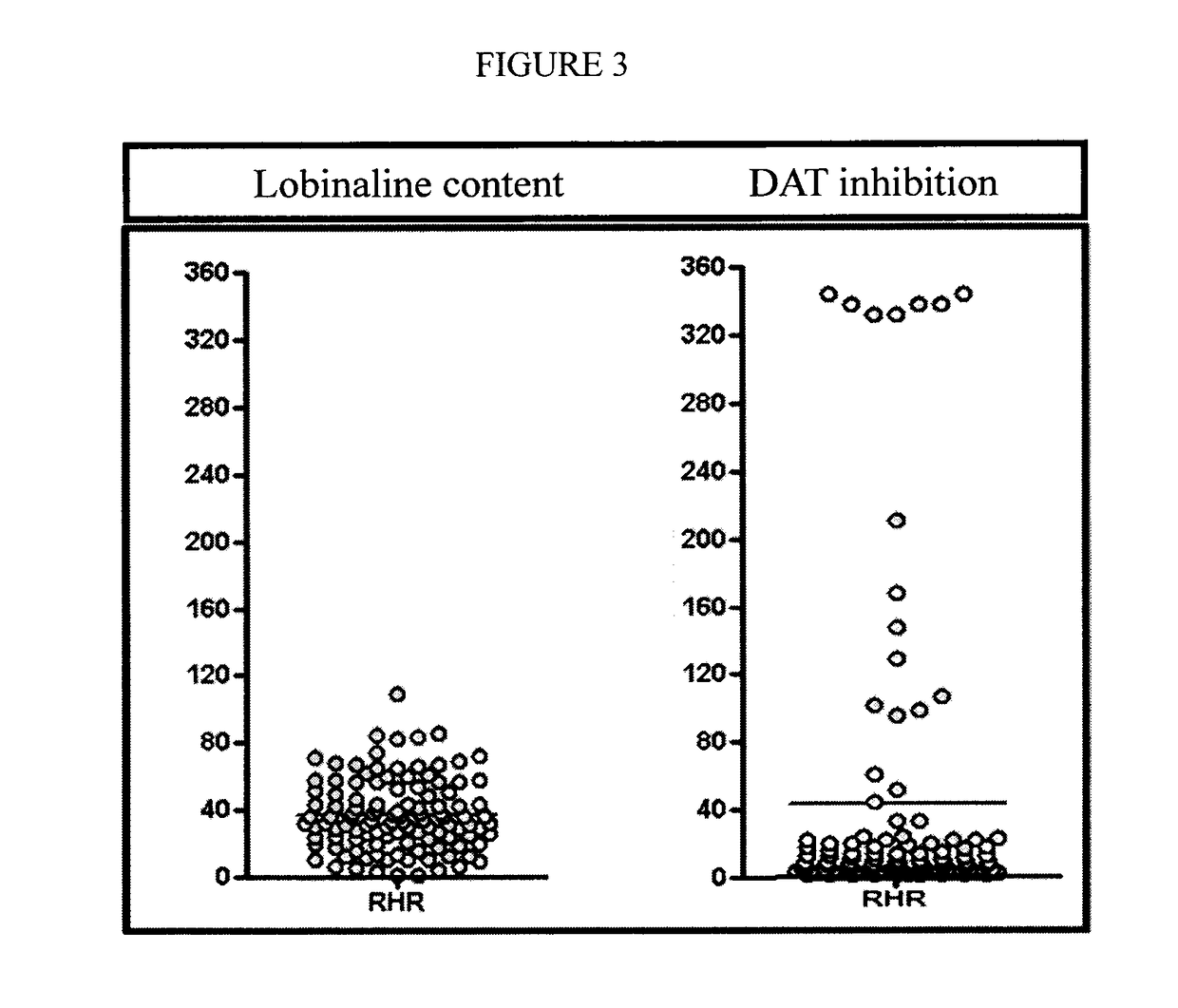Mutagenesis of plants for overproduction of selective estrogen receptor modulators
- Summary
- Abstract
- Description
- Claims
- Application Information
AI Technical Summary
Benefits of technology
Problems solved by technology
Method used
Image
Examples
example 1
Abstract
[0237]When bioactive metabolites in plants are too complex for chemical synthesis, this limits their potential uses. For example, low yields of potential pharmaceuticals in plants limit production, and the synthesis of compound libraries for screening against target proteins is difficult. As described herein, an alternative is to use the genomic / biosynthetic capacity of the plant species. First, the therapeutic target protein is expressed in transgenic plant cells so that metabolites which interact appropriately with the target protein confer a survival advantage. In a gain-of-function mutant population those mutants which survive should be enriched in individuals over-producing the known “wild-type” active metabolite, or other unknown metabolites which are active at the target protein. An example is a native Lobelia species containing a previously uninvestigated alkaloidal inhibitor of the dopamine transporter (DAT), a target in Parkinson's Disease. Expression of the human ...
example 2
Target-Directed Biosynthesis for Therapeutic Optimization of Medicinal Plant Species
[0281]The methods described herein are designed to generate compounds which interact with specific target proteins (e.g., human target proteins), for use in conventional drug discovery, but uses plant biosynthesis rather than chemical synthesis to produce active molecules. The resulting “genomically optimized” mutant plant cells represent unique genetically-modified organisms. These plant cells are a source of individual active metabolites or of novel medicinal plant extracts.
[0282]The experiments described herein aim to establish the value of a modification of this technology, using phytoestrogens generated by licorice (Glycyrrhiza glabra) as the example. Licorice root extract is used worldwide as hormone replacement therapy post-menopause, because it contains phytoestrogens which activate human estrogen receptors (ERs). However, activity at the ERalpha subtype post-menopause is a potential cause of...
PUM
| Property | Measurement | Unit |
|---|---|---|
| time | aaaaa | aaaaa |
| time | aaaaa | aaaaa |
| time | aaaaa | aaaaa |
Abstract
Description
Claims
Application Information
 Login to View More
Login to View More - R&D
- Intellectual Property
- Life Sciences
- Materials
- Tech Scout
- Unparalleled Data Quality
- Higher Quality Content
- 60% Fewer Hallucinations
Browse by: Latest US Patents, China's latest patents, Technical Efficacy Thesaurus, Application Domain, Technology Topic, Popular Technical Reports.
© 2025 PatSnap. All rights reserved.Legal|Privacy policy|Modern Slavery Act Transparency Statement|Sitemap|About US| Contact US: help@patsnap.com


